How to add accesses on your TinyMDM administrator console?
You can add managers to TinyMDM to prevent all admin from logging in with the same login and having the same access rights. In this tutorial, find out how to add managers, define their access and create structures.
Important info:
- To create a new manager, the email you choose must not already be used as the main administrator of a TinyMDM account. If this is the case and you wish to change the email of the main administrator of the account in question, you can modify it by following this tutorial.
- If the email address of the new manager is already being used as a manager on another TinyMDM account, then the manager will be able to connect to both accounts and potentially transfer devices between them. If you don’t want the manager to be able to transfer devices: when managing its permissions, uncheck the Change device’s user option in the Devices group. Find out more about transferring devices.
1. Create managers and assign them permissions
Go on to the Managers and Structure tab, under Managers subtab. You have three options for adding managers:
- Create a manager who logs in with their email address and password
- Create a manager who connects directly with their Google account (Google SSO)
- Import a list of managers via a CSV file
a. Create a manager with an email and password
- Click on Create a manager. It will open the manager’s permissions page:
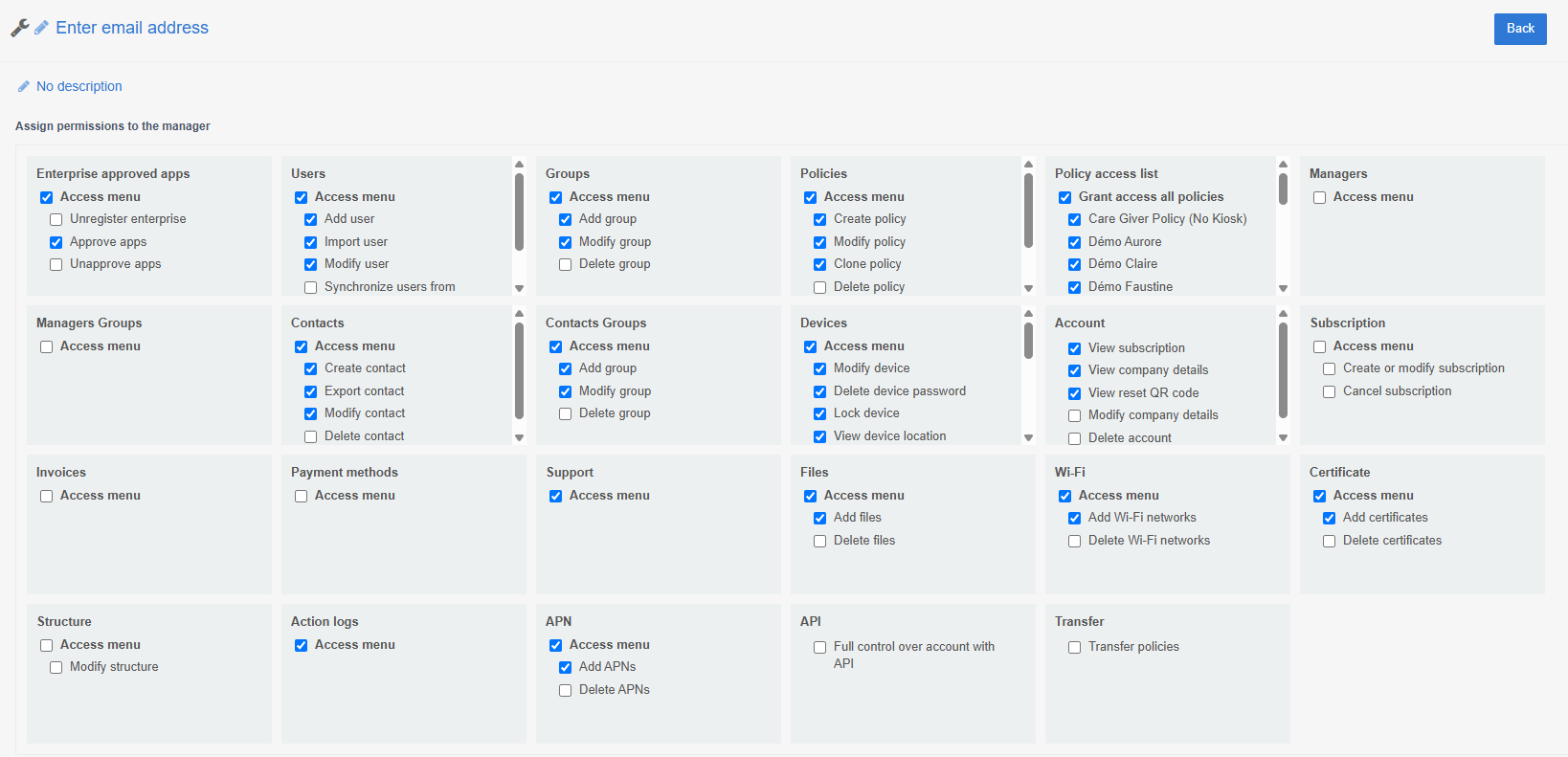
- On top of the page, enter the manager’s email address (required) and a description (optional).
- Check off each action that the manager can perform when logging on to the administration console. All checked actions are considered authorized; all unchecked actions are prohibited.
- Then click on Back at the top right of the page. A pop-up window will appear allowing you to choose whether or not to send an invitation email to the manager. By clicking on Ok, the manager will receive an email informing them to set a password to access their TinyMDM account.
Once the password has been created, the manager will be able to connect to TinyMDM using its email address and password.
b. Create a manager with Google SSO
- Click on Create a manager with Google SSO. It will open the manager’s permissions page:

- On top of the page, enter the manager’s email address (required) and a description (optional).
- Check off each action that the manager can perform when logging on to the administration console. All checked actions are considered authorized; all unchecked actions are prohibited.
- Then click Back at the top right of the page. A pop-up window will appear allowing you to choose whether or not to send an invitation email to the manager. By clicking Ok, the manager will receive an email to use the “Connect with Google” button each time they log in.
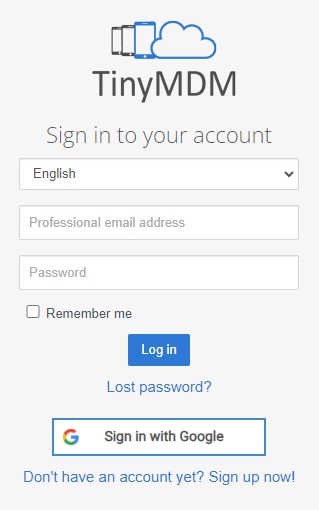
By clicking on Connect with Google button, the manager will have access to TinyMDM account according to their needs, and this without configuring their password.
c. Import managers
Start by creating a CSV file in the following format: <manager_email>;<manager_description>;<send_invitation>. Once it is done, click on Import managers and add your file.
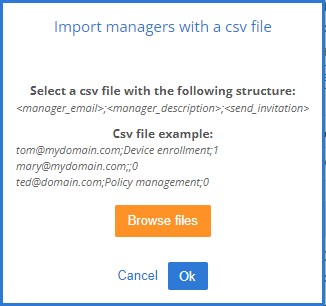
Once your CSV file has been imported, all your managers will appear on TinyMDM. To modify a manager’s permissions, click on its ![]() menu , then on Edit manager. The Permissions page opens:.
menu , then on Edit manager. The Permissions page opens:.

Modify the permitted actions for this manager by checking the permitted actions and unchecking the prohibited ones.
If you have requested to send an email to the managers, they will receive an email so that they can create their password and connect to TinyMDM with their email and password. If you want managers to log in with their Google account, please follow step b.
2. Add groups of managers
If you wish to create groups of managers with the same permissions on the admin console, you can create manager groups. To do this:
- Go on to the Managers and Structure tab and then under Manager groups subtab.
- On the top-right, click on Add managers group. The permissions page opens:
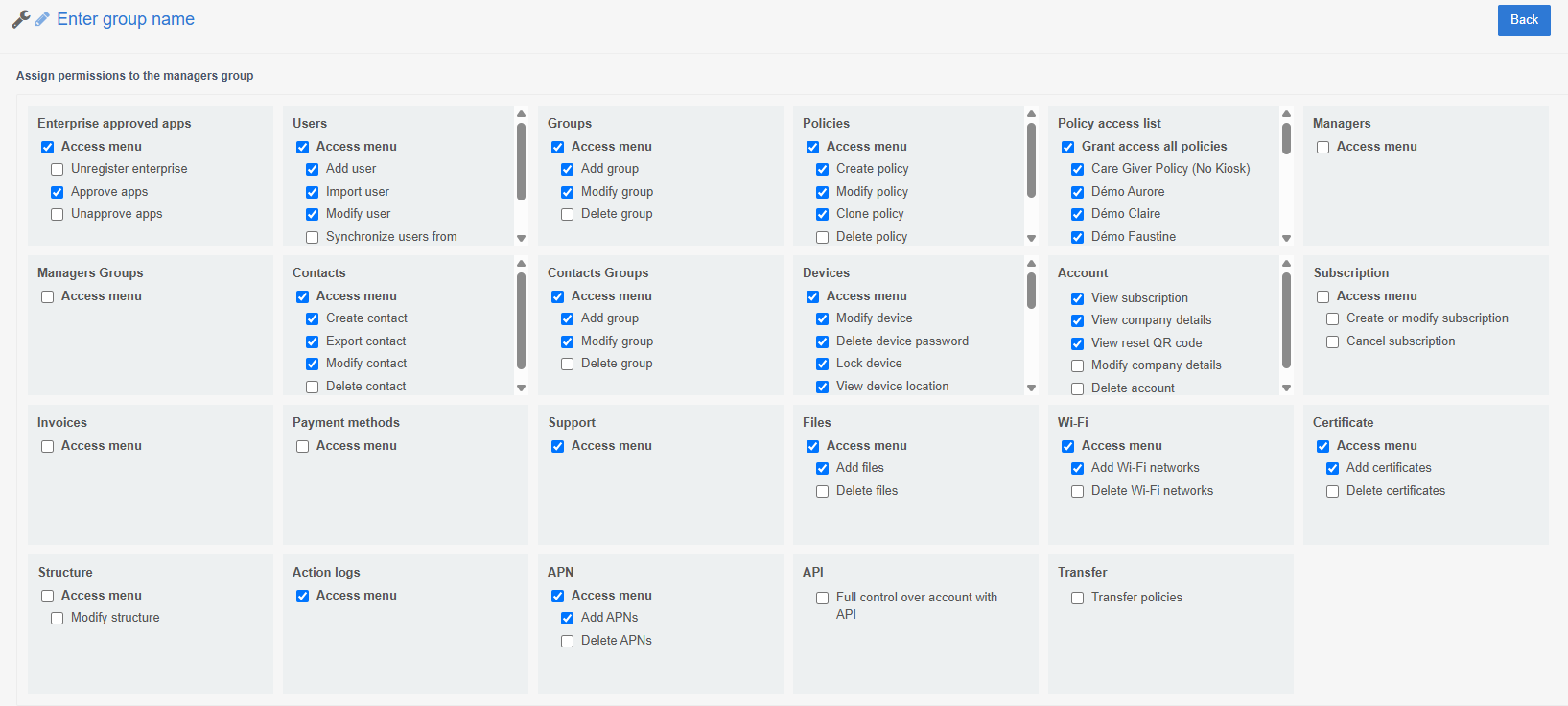
Enter the group name, then tick each action that managers in this group will be able to perform when logging on to the administration console. All checked actions are considered authorized; all unchecked actions are prohibited.
Once the group has been created and permissions authorized, return to the Managers sub-tab, then:
- Select the managers you wish to appear in this group by ticking them off one by one.
- In the blue banner that appears, click on the menu
 , then on Modify managers group. All selected managers will then be considered members of the same group.
, then on Modify managers group. All selected managers will then be considered members of the same group.
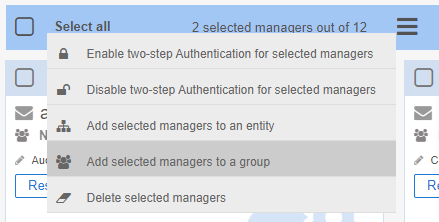
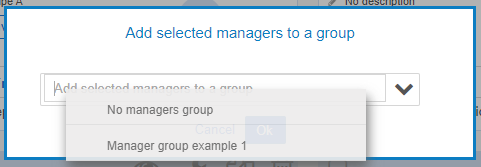
Go further with the Structure feature
Creating managers does not require you to create a structure. However, if you need to limit the visibility of certain managers to only part of your mobile fleet, you can use TinyMDM’s Structure feature.
